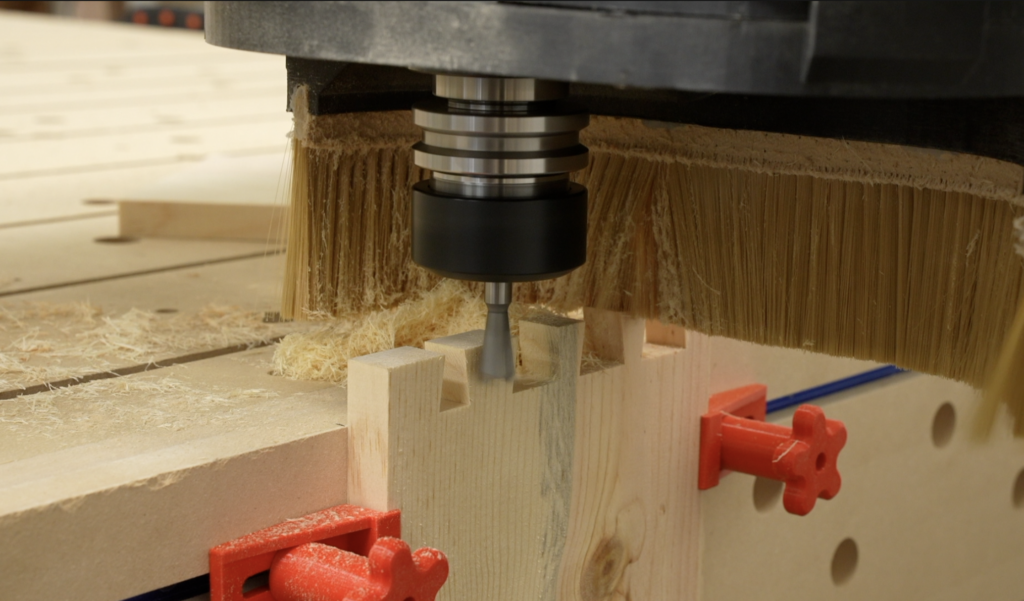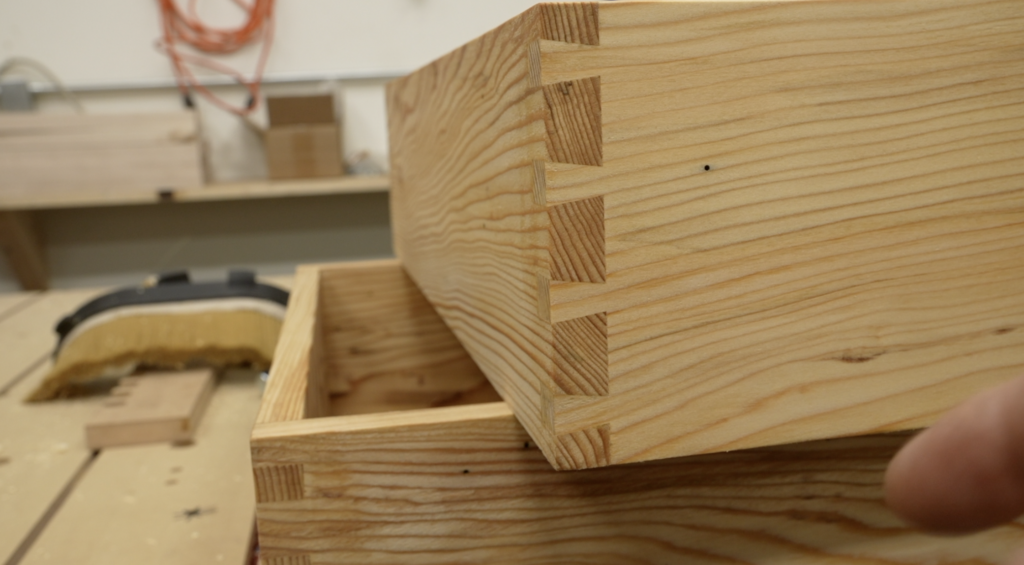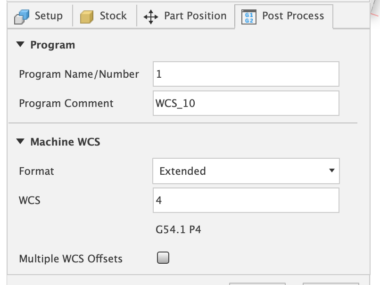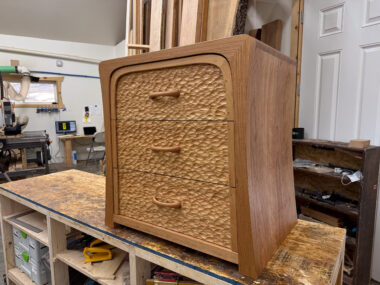Video & Notes: CNC Vertical Work Table
Video link: CNC Vertical Work Table Build
It’s been a while since I posted on my blog, and I’ve got a few videos on YouTube that are interesting to talk about.
This one above is about my new vertical work table. In some of my earlier videos I mentioned that I wanted to build a vertical work station, and I finally got around to it. The whole point of making a vertical work table is to cut joinery. In general, you need to mount drawer sides, and frame rails vertically to cut a dovetail or tenon.

I did a simple design, following the style of my original CNC Horizontal Work Table / CNC Spoilboard, and took some ideas from Jay Bates and Frank Howarth. I put a bunch of dog holes in various locations, including some that would produce specific angles in the center. There are some large holes to allow clamping, and t-tracks for the typical 3d printed hold down clamps that I use.

I’ve been using the table for several months, and here are things I’d like to change on it:
- More dog holes: Add a second row of dog holes below the first horizontal row. Short vertical pieces won’t make contact with my current second row of dog holes, so I’d like another row right above the second t-track. I work around this issue by using a spacer that is long enough to touch both rows.
- Vertical t-tracks: It has been difficult to mount 1.5″ thick pieces lengthwise along the edge to cut mortises. They’ll cover up the first t-track, and the next t-track is too far away. Having 4 or 5 vertical t-tracks would be better and more flexible. Vertical t-tracks could also be used to mount a “bottom stop” for repeating the same operation. There are other ways to do this, but a vertical t-track would be easiest.
- Better method of clamping pieces lengthwise: I’m not sure how to do this, but this is related to the above issue, where I try to clamp 1.5″ to 2″ thick pieces along the top. I wish there was some better way of clamping. I could have left a gap on the top to allow regular clamps to be on the top, but then the machine would hit those, so that wouldn’t work. Embedding an array of t-nuts might work in this situation, although I generally dislike t-nuts for various other reasons (mainly bottoming out).
- Vise?: I thought about somehow adding a traditional woodworking vice to the end of the table and using it like I would normal woodworking. I still think this might be a worthwhile idea to investigate, but it would consume a lot of space and present other problems. I think some other type of removable vise like mechanism might be a better solution, something that uses the t-tracks but has the rigidity and clamping power of a woodworking vice.






[…] the bit thickness into my design. I could have mounted the pins vertically using my new vertical spoilboard, but I wanted to just try out some other […]